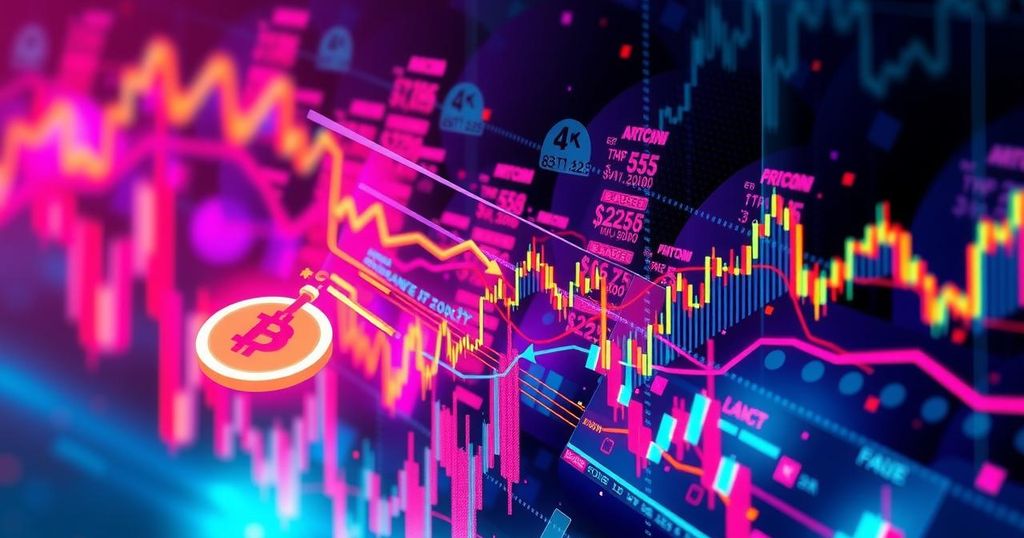Understanding Cryptocurrency Price Manipulation: Tactics and Impacts
Cryptocurrency price manipulation involves tactics that inflate or crash coin values for profit. Common strategies include pump-and-dump schemes, whale movements, and wash trading. The manipulation’s emotional appeal is potent, making scams lucrative and harmful to market trust. Fortunately, awareness and new tools are emerging to combat these practices, alongside regulatory movements aiming to clean up the crypto space.
Fast Summary: Cryptocurrency price manipulation is a significant issue in the digital asset space where insiders or groups inflate or crash coin prices. Common tactics include pump-and-dump schemes, whale movements, and wash trading. As manipulative tactics advance, so does the need for awareness and education among traders. The landscape is shifting, though, with emerging technologies and regulatory efforts aimed to combat these deceptive practices.
Article Body: Price manipulation in the crypto world is a dark and somewhat deceptive practice that can leave many traders in its wake. When a coin skyrockets in price seemingly out of nowhere, only to crash just as quickly, the explanation often lies in manipulation rather than genuine market activity. This manipulation generally involves insiders or colluded groups who inflate or lower a coin’s price through methods like fake trading volume, promotion, and sudden sell-offs. Unlike traditional finance, crypto often lacks stringent regulations, making it a playground for such behaviour.
Manipulators often create false demand or fear surrounding a token. When other traders react emotionally to these influences, prices either soar or plummet, allowing manipulators to cash out at the optimal moment, leaving uninformed traders with losses.
Scammers don’t need a magic trick; they just need to understand market psychology. As the crypto landscape expands, various tactics to exploit this have emerged. The most notorious include the pump-and-dump scheme, where a group buys a low-cap token quietly, builds hype through influencers or viral posts to inflate the price, then dumps their holdings, leaving others to suffer. The whales, or large wallet holders, can sway market trends significantly with just one trade, leveraging smaller traders’ actions, which amplifies market volatility.
Another common tactic is wash trading, where one user buys and sells the same token to create misleading trading volume figures. This activity portrays a façade of legitimacy and interest in the asset and generally thrives in unregulated environments, tricking investors into thinking a project has higher demand. Then there’s spoofing, where fake buy or sell orders are placed to create an illusion of market activity, and once others act on this, the manipulators quickly back away with profits.
Statistics reveal an alarming trend; a 2022 study found that about 70% of transactions on unregulated exchanges were classified as wash trades, with some platforms seeing as high as 80%. This raises red flags for anyone trading in such environments.
Digging deeper, the manipulation doesn’t always display itself outright. Some advanced tactics include high-frequency trading bots that can execute trades faster than any human can react. Insider trading is still a concern, where non-public information provides traders with an unfair edge. Also, hackers have been known to exploit oracles, which provide price data within decentralized finance platforms, shutting down liquidity pools or tricking smart contracts.
It’s important to note that manipulation thrives on psychological triggers like greed, fear, and the fear of missing out (FOMO). Traders often make split-second decisions based more on gut feelings than analysis. This emotional volatility can lead to reactions that favour manipulators, who understand how to entice traders with the promise of quick wealth or incite panic to drive prices down.
Given all this manipulation, trust in the crypto ecosystem is eroded each time a scam occurs, affecting not only individual traders but the market as a whole. Newcomers who fall victim often leave, disillusioned by the experience, further threatening the broader trust needed for the market to flourish.
However, there is hope on the horizon. More and more crypto exchanges are deploying AI surveillance tools to identify and tackle suspicious behaviours in trading activities. On the decentralised finance (DeFi) side, protocols are evolving with greater transparency measures, enabling communities to govern and scrutinise suspicious activities directly. Regulatory authorities are getting involved too, with new legislation aimed at curbing insider trading and related abuses.
While the system is not infallible, every new measure helps protect the integrity of the market. So don’t be blindsided; stay informed! Your best defense against manipulation lies in thorough research and a healthy dose of skepticism about sudden market changes. When things feel off, more often than not, they probably are.




Post Comment